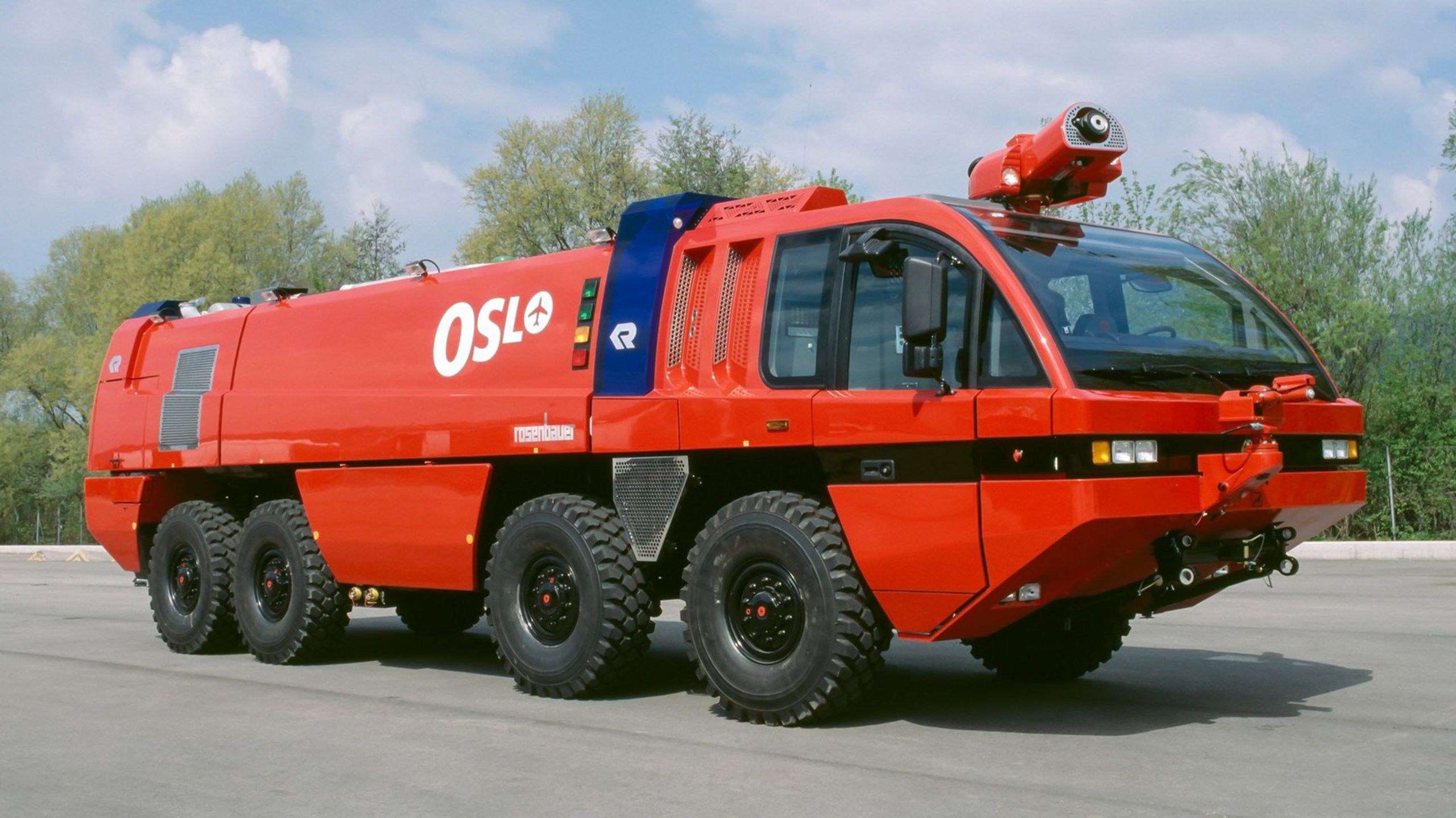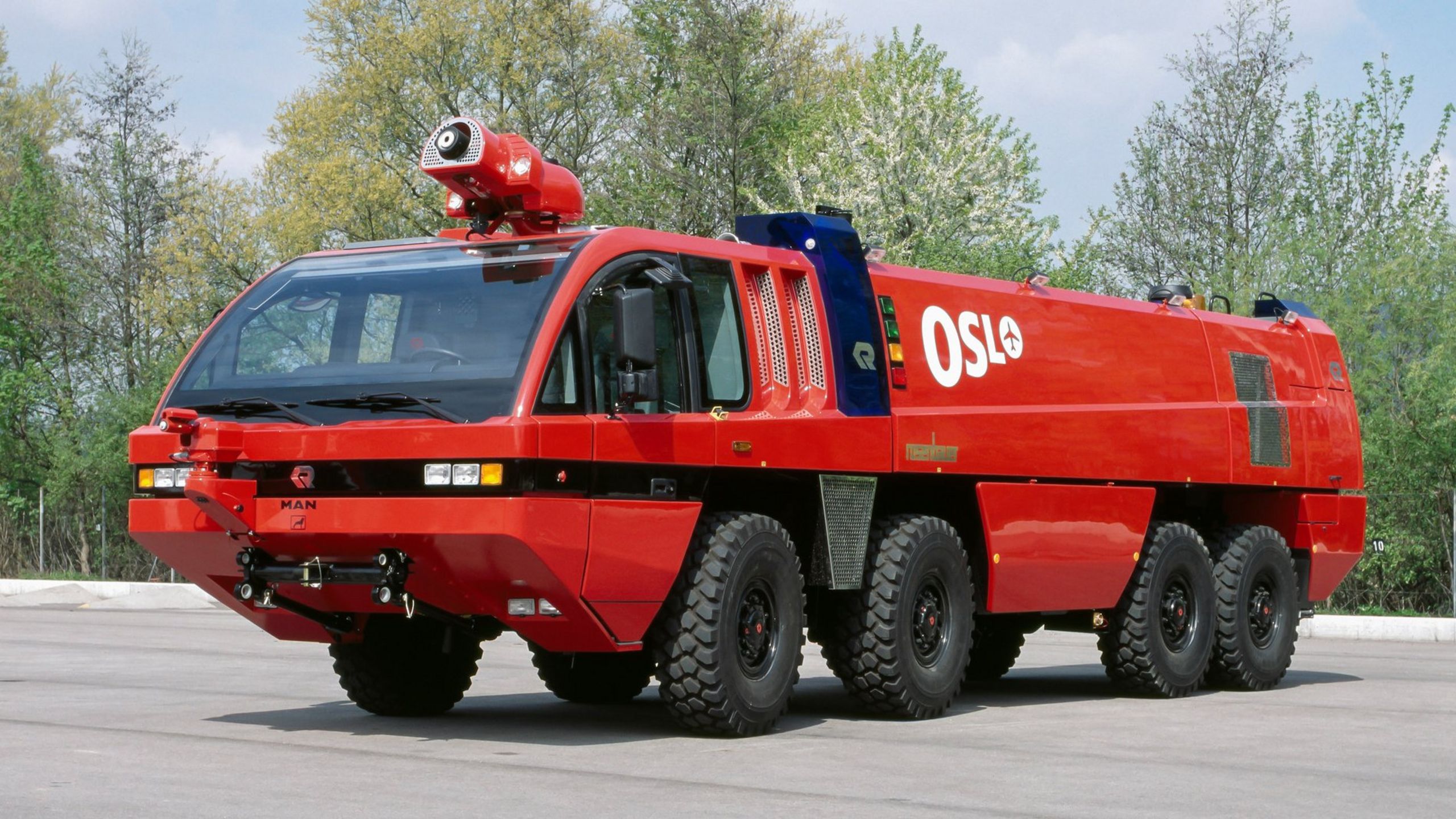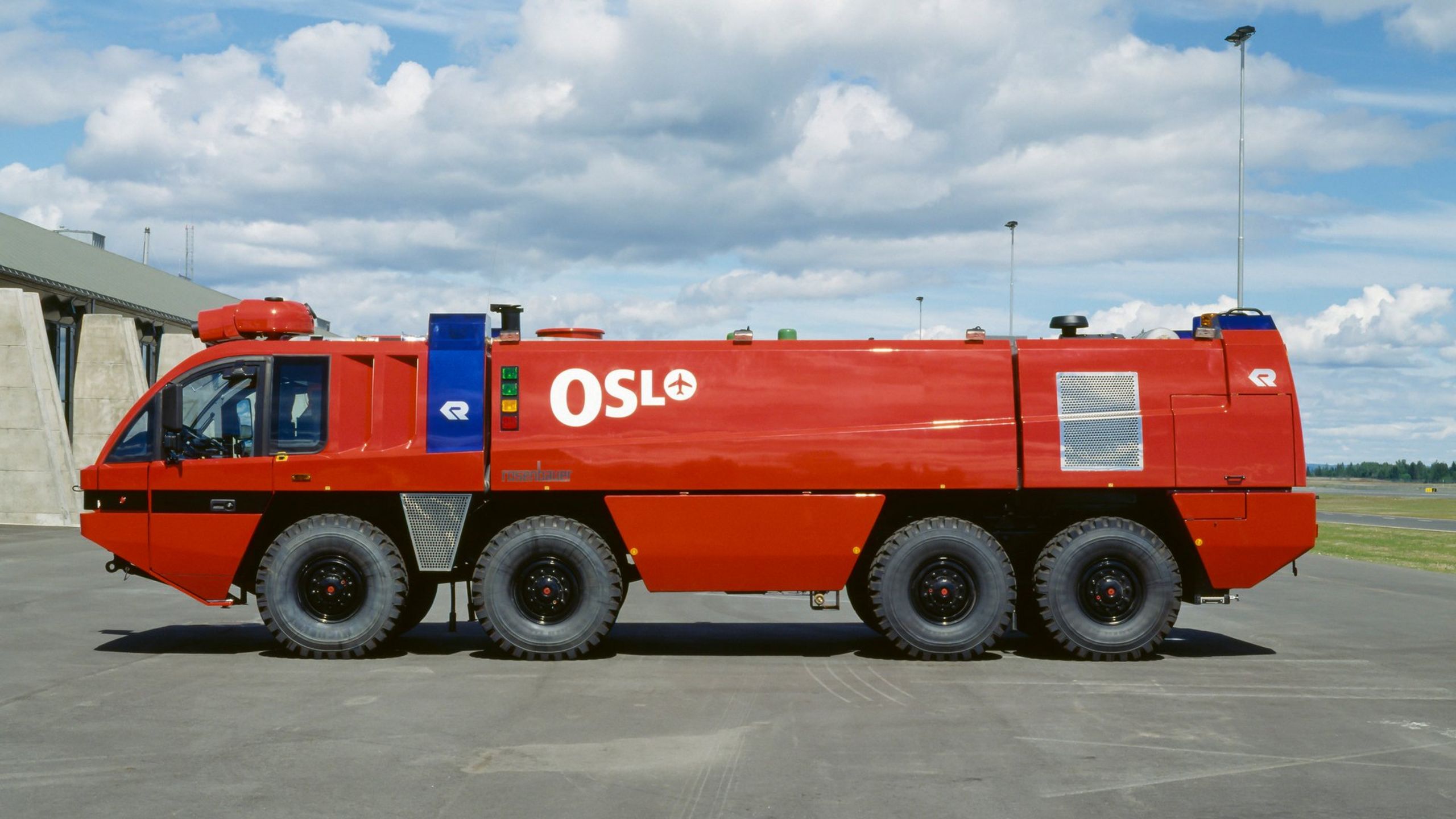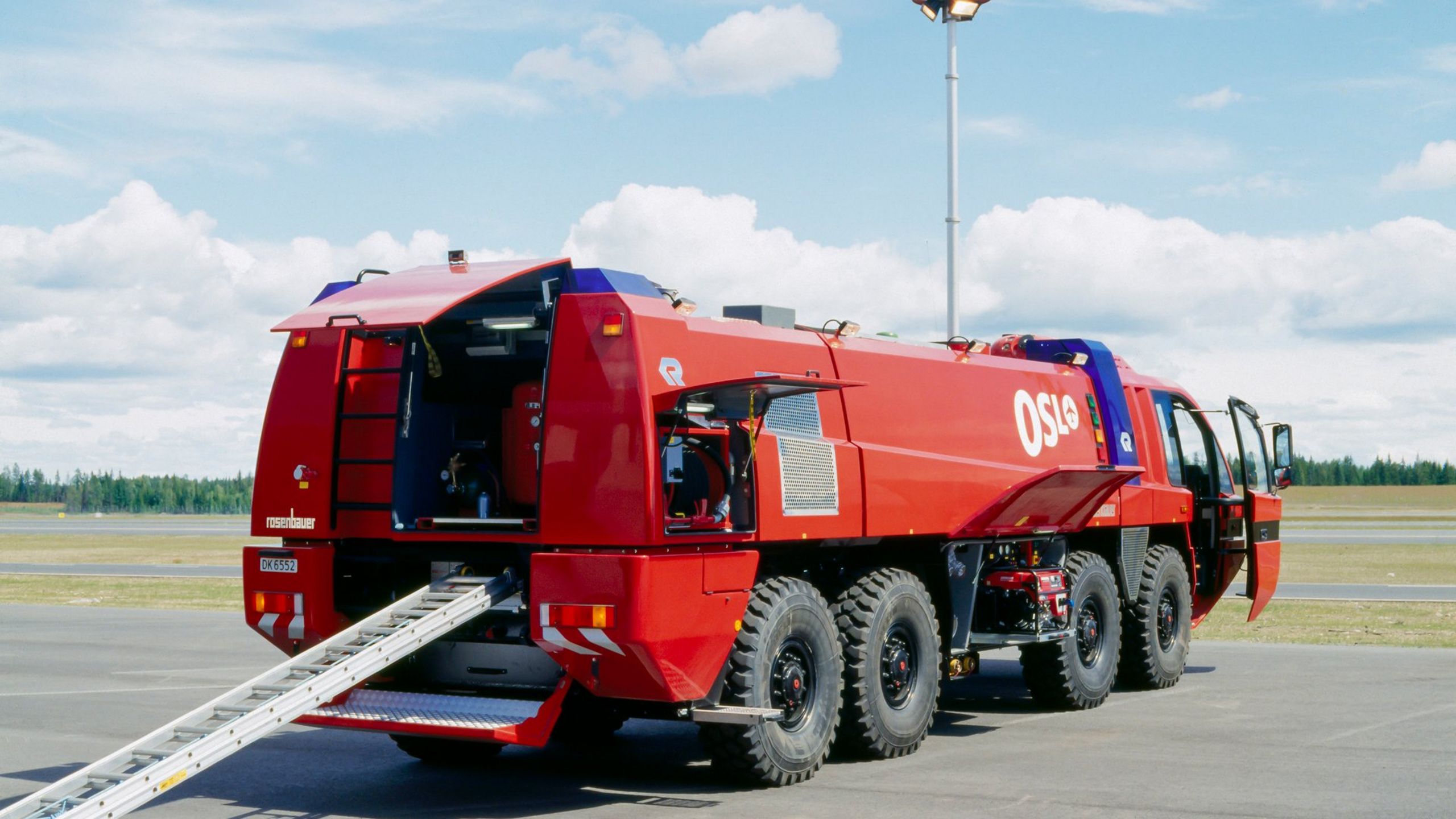Faster is not possible!
The fire department at Oslo lufthavn is at the scene of an accident in less than two minutes after being alerted. That is a (world) record!
The International Civil Aviation Organization specifies three minutes as the emergency response time for airport fire departments to be able to respond appropriately to an aircraft accident at an airport. This means that a maximum of 180 seconds may elapse after an alarm is received before the first airport fire engine arrives at the scene of the accident, is positioned there and has begun extinguishing the fire.
As a rule, airport fire departments are organized in such a way that they just about meet this three-minute requirement. Not so the Fire and Rescue Service at Oslo Airport Gardermoen (Brann og redningsberedskapen på Oslo Lufthavn Gardermoen). It has set itself a much more ambitious goal and even manages a response time of less than 120 seconds. One of the reasons for this is the two fire stations strategically distributed around the airport (west and east), from where any point on the two runways can be reached in less than two minutes. Another reason is the perfect interaction of the response team, a collective of 68 specially trained forces who have their own driver training (super user) on their airport fire trucks.
PANTHER with winter package
The FLF fleet at Oslo lufthavn consists of seven Rosenbauer PANTHER. Three of these are stationed at each station and are ready for use at any time, while a further vehicle is kept in reserve. The first PANTHER were procured for the then newly opened capital city airport back in 1997/1998, and between 2009 and 2015 they were replaced by new vehicles and the fleet was increased. The current vehicles are PANTHER 6x6s with high-end firefighting equipment, including a flash CAFS system that can generate compressed-air foam and apply it via the roof-mounted spotlight.
In addition, the vehicles at Oslo Gardermoen Airport are equipped with a winter package to ensure their flawless functionality even at temperatures as low as minus 30 °C. The winter equipment of the PANTHERs includes, among other things, a heater (consisting of a burner, pump and hot water circuit) for the 14,000-liter water/foam tank to keep the extinguishing agents at minimum temperature. In addition, a switchable auxiliary heater provides heat in the cabin when needed, and another auxiliary heater keeps the pump room frost-free. The cooling water can also be preheated (outdoors) before departure.
Fire and rescue services
The airport fire department is responsible for all fire and rescue services at Oslo lufthavn and, in addition to the PANTHER fleet, also operates vehicles for building fire protection, hazmat and decon operations, and emergency medical and rescue operations. One of its tasks is to monitor the stationary fire extinguishing equipment on the airport site, first and foremost the approximately 14,000 fire detectors in the 137,000 m2 terminal complex. It is also alerted to major emergencies outside the airport grounds. In these cases, it cooperates with the municipal fire departments in the surrounding communities of Ullensaker, Gjerdrum and Nannestat, with whom a joint exercise is also held every six months.
Basic education and training for members of the airport fire department takes place at the Værnes Fire and Rescue Center, which also features a PANTHER tactical simulator with a full-scale map of the Oslo airport layout.
Land of frequent flyers
Oslo lufthavn is Norway's central air transport hub with a capacity of 32 million passengers a year (2021: 9.4 million). Air travel is the preferred mode of transportation in the country. The routes to Trondheim, Bergen and Stavanger are among the ten busiest in Europe in terms of passenger numbers, and only by air can the northernmost regions such as the Lofoten Islands or Spitsbergen be reliably reached during the polar night. Oslo Gardermoen is operated by the Norwegian Avinor Group, which is responsible for a total of 44 airports in the country and also includes the airport fire departments. One of its most important goals is to make Oslo Gardermoen the safest airport in Europe. The PANTHER is just the right vehicle for the job.
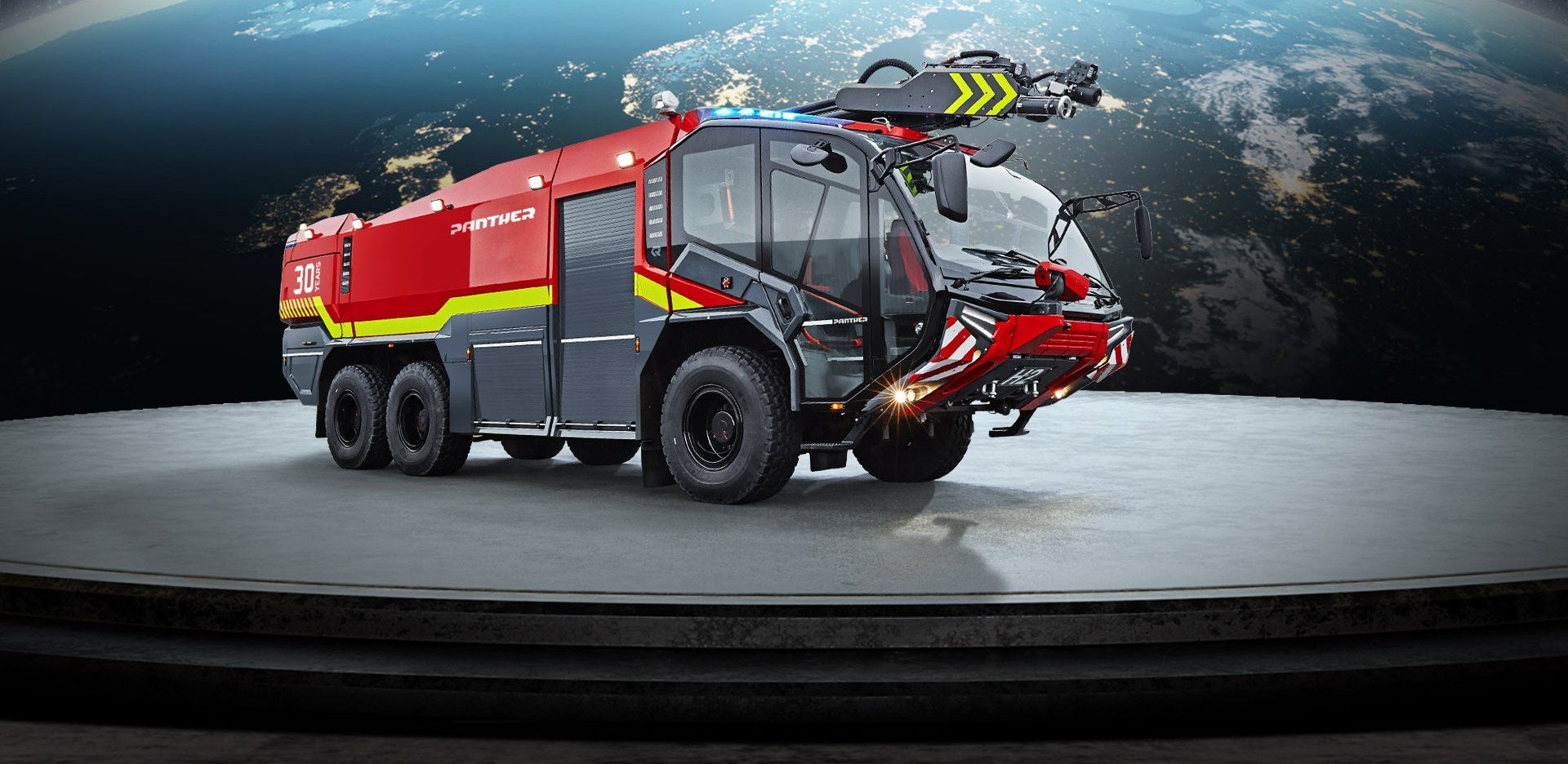
Register now for the Rosenbauer Newsletter & always be well informed!
Contact
Rosenbauer International AG
Paschinger Str. 90
4060 Leonding, Austria
office@rosenbauer.com
